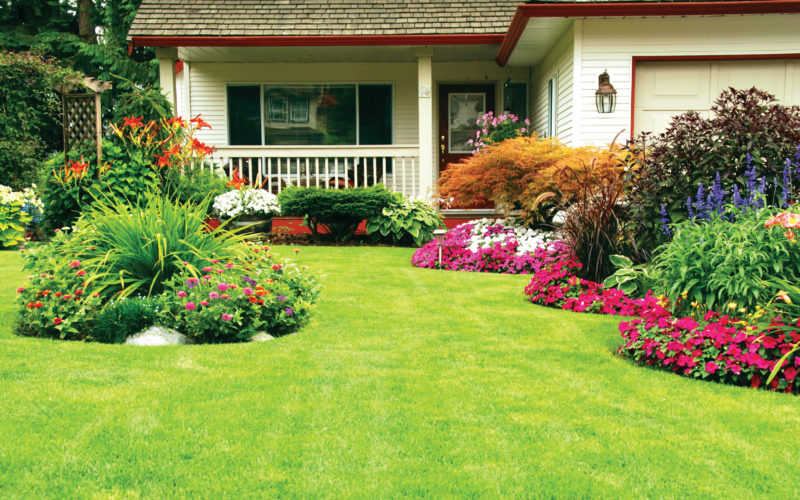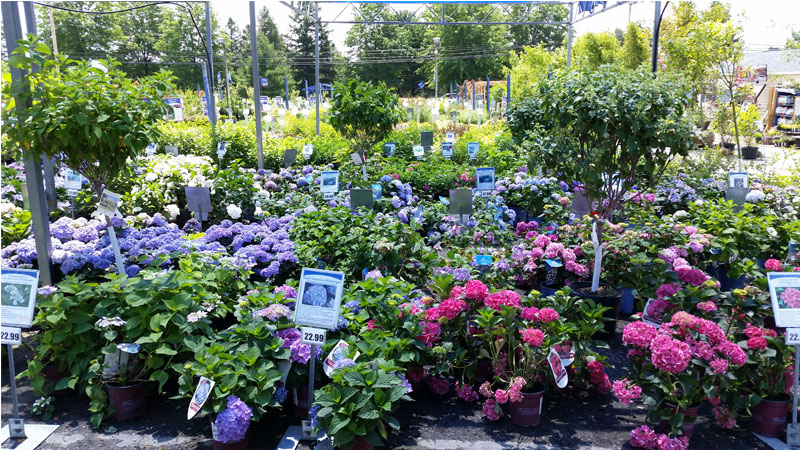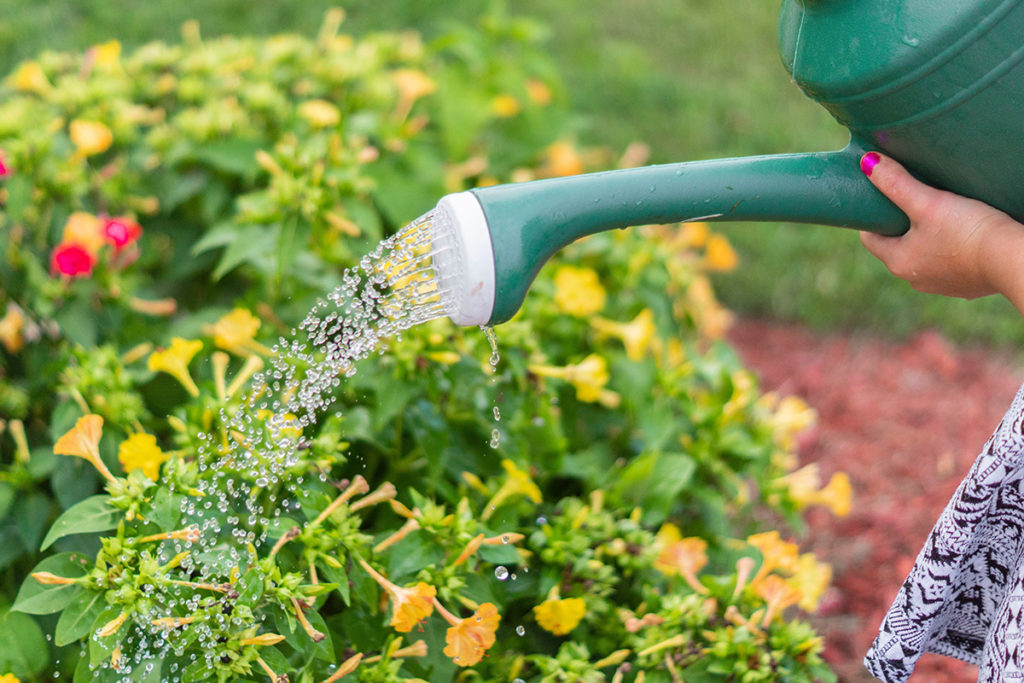18 Landscaping Rules That Produce Stunning Results

Tackling a landscape design project can seem overwhelming initially, with so many questions popping into your brain. “What plants should go where?” “What flowers should I choose?” “Do I have too much or not enough?” Creating a beautiful landscape around your home shouldn’t be difficult. In fact, it can be rewarding.
Benefits of Landscaping
Not only does landscaping improve your home’s curb appeal, but there are other environmentally-friendly reasons why landscaping is important.
- Grass is a natural coolant. It’s been measured to be 20 degrees cooler than bare soil. Shade trees have also been known to reduce the temperature in a home’s attic by 40 degrees.
- Grass cleans the air. It captures dust, smoke particles, and other pollutants, making your outdoor time healthier.
- Plants promote peace and quiet. Another benefit of landscaping is that is known to reduce noise pollution. Compared to concrete or pavement, lawns and plants reduce noise levels by 20-30%.
- Plants and trees make you healthier. Being in a natural environment can reduce stress, lower blood pressure, and improve attention and memory.
So, let’s get started! We’ve broken down our best landscaping tips for beginners into three categories: space planning, choosing plants, and care and maintenance. Whether you’re reviving a tired landscape or you’re starting from scratch, you’ll find lots of helpful advice in our list of 18 landscaping rules that produce stunning results.
Landscaping Rules — Space Planning
- Foundation planting can be used to disguise a raised foundation and ‘tie’ your house to the ground. It should be simple and emphasize the interesting architectural features of the house. Evergreen shrubs are a popular choice but don’t be afraid to choose something with more texture or fluidity.
- Separate areas and create privacy by planting shrub screens or groups of shrubs around the perimeter of your yard or special areas of your yard (pool, patio, etc.).
- Keep the majority of your own lawn open (with the exception of trees) and group plants in informal arrangements along the borders of the lawn areas. Cluttering up your lawn reduces its apparent size and makes maintenance, such as mowing, more difficult.
- Add walking paths in high traffic areas or to link points of interest.
- Avoid planting in straight lines (except for hedges, boulevard trees, and formal plantings). In nature, almost nothing grows in a straight line so it’s important for your plant growth to feel organic.
- Place trees where they can frame the view of your home rather than screen or hide it.
- Don’t overplant. You need to consider the ultimate growth and spread of the trees and plants you choose when determining where to place them. Avoid planting trees too close to the house nor directly in front of it and use moderation, especially with large flowering shrubs.
- It doesn’t matter how rough your plan may be. What is important is that it represents where you want each individual plant to go. After the plan has been made, drive a stake where each plant will go and write the name of the plant on the stake. This will give you a rough representation of what your future landscaping will look like.

Landscaping Rules — Choosing Plants
- Choose native plants. Native plants are perfectly suited for this growing area, meaning they are acclimated to the climate and soil found in Central PA. They are generally easier to grow, need less supplemental watering, and are more resistant to the pests or disease in this area.
- Choose a variety of plants of differing heights to create greater visual interest. For example, place taller plants in the rear and lower plants in front of those.
- Think about year-round landscaping and choose plants that will provide interest at all times. Flowering shrubs can bloom throughout multiple seasons, annuals can provide instant touches of bright, colorful foliage, and trees or shrubbery with berries or colored bark make an impact in winter.
- Evergreens will provide continuity to your landscaping. These trees and shrubs will provide interest all year long, which is desirable when harsh winter weather takes away most sources of color.
- Plants can be useful as well as ornamental. Many beautiful ornamental shrubs bear edible fruit, while others produce berries or seeds relished by birds. You can also choose plants that help pollinators carry out the important work of plant pollination. Many plants grown primarily for their fruit tend to make an excellent hedge or border plants.
- Some variety is good, but avoid going overboard. A few varieties, planted in masses, are better than many different kinds scattered here and there. Also, take care to group plants with the same growing requirements (sun lovers, shade lovers, or plants that don’t need much watering) in the same areas.
- If your yard is small on space, you can still find ways to punch up your landscaping. Fill containers, hanging baskets, and window boxes with annual plants. This is an easy way to add pops of colors that can be cost-effectively switched throughout the year.

Landscaping Rules — Care & Maintenance
- Frequent mulching will keep your landscaping healthy and happy! Mulch keeps weeds away, adds nutrients to your soil, and provides insulation in cooler months. Mulching every year or every other year, in either the spring or fall, is recommended for best results.
- How often should you water your landscaping? Watering thoroughly and less often is more effective than watering superficially and more often. Aim for a deep soaking instead of watering just the surface. Also, try to water in the morning and dry throughout the day. This will reduce the risk of fungal disease.
- Pruning your plants will encourage new growth. But when is the best time to prune? We suggest this general rule of thumb: If your plants and shrubs bloom before June 15, prune your plants as soon as they finish flowering. If they bloom after June 15, prune while they are dormant (winter months) or in early spring before the buds start to grow.
Read our expert guide if you are interested in how to plan for your own residential landscape design.
Ready to get started? The garden experts at our Home and Garden Centers have so much advice to share about landscaping design. Visit us today!
